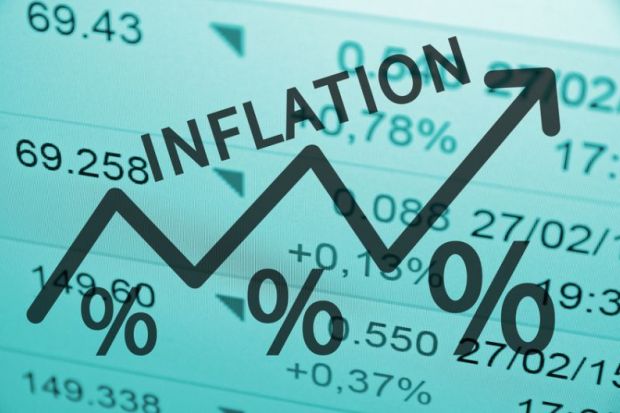Declining inflation has not prevented a surge in the cost of Australia’s most expensive degrees, and prices will balloon again next year unless the Universities Accord produces major changes to fee-setting arrangements.
Annual student contributions for a raft of economics, business, law, social science and humanities courses rose this year by A$1,181 (£611), or 7.8 per cent, even though last year’s inflation rate was a much lower 4.1 per cent.
Fees are set to rise a further A$669 to almost A$17,000 next year under current indexation rules, which use 12-month-old Consumer Price Index (CPI) data to determine increases.
The escalation of humanities fees began when the 2021 Job-ready Graduates (JRG) reforms ended the longstanding practice of setting students’ contributions in line with their likely future earnings. Instead, industry demand was adopted as the guiding principle, with higher fees in disciplines judged of less need in the workforce.
Consequently, student contributions for humanities subjects more than doubled and have grown another one-eighth since then amid soaring inflation.
Commentators hope that the final report from the accord, which is expected to be released in late February, will change this by unravelling the JRG course funding changes. The interim report in July said the JRG reforms risked “damaging the sector if left unaddressed”, and the accord panel was “giving further consideration” to student contributions.
Asked about his intentions for JRG, the education minister, Jason Clare, said the scheme “hasn’t worked” but he would not commit to scrapping it. “I shouldn’t pre-empt that,” he told the National Press Club. “I’m very much looking forward to the final report.”
The interim report said the panel was also considering changes to indexation, including ways to reduce its “volatility”. High inflation has drawn attention to incongruities in the indexation mechanisms, including the use of year-old inflation data to adjust fees and subsidies, and different time frames for indexing outstanding debt.
Debt is indexed before students’ balances have been adjusted to take account of the previous 11 months’ compulsory repayments, forcing them to pay a CPI-level hike on borrowings they have already repaid.
Australian National University policy expert Andrew Norton said the timing of indexation also disadvantaged universities, especially during pay negotiations. “The union’s going to be pushing to get CPI covered, whereas the unis won’t get the money for that CPI for another 12 months,” he said. “And [prices of] other goods…will have gone up immediately, whereas the money to cover those costs is 12 months away. So, it does impact their budget cycle.”
In better news for universities, their funding envelopes have also been indexed at the 2023 CPI rate. Professor Norton said that while the government had promised this level of indexation, it had not been legally required to deliver it.
He said recently published funding agreements with universities showed that they had been allocated over A$7.2 billion to provide higher education courses this year, about A$450 million more than in 2023.
Professor Norton said the extra money, combined with weak domestic demand, allayed his concerns that universities would be unable to accommodate a 2025 bulge in school-leaver numbers.
“Because we’ve had small commencing cohorts, that’s going to have a pipeline effect, which should mean there’s plenty of capacity in the system,” he said. “There may be particular courses and institutions where that’s not true, but at a system level I’m pretty sure there won’t be any major issues.”
Register to continue
Why register?
- Registration is free and only takes a moment
- Once registered, you can read 3 articles a month
- Sign up for our newsletter
Subscribe
Or subscribe for unlimited access to:
- Unlimited access to news, views, insights & reviews
- Digital editions
- Digital access to THE’s university and college rankings analysis
Already registered or a current subscriber? Login










